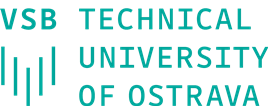Carbon dots, one of the most studied nanomaterials of today, were the main topic of a workshop held on Wednesday at the IT4Innovations National Supercomputing Centre of VŠB-TUO. The research centre welcomed colleagues from the Czech Institute of Research and Advanced Technologies – CATRIN of Palacký University.
At the workshop, the scientists presented the results of many years of research focused on the design, synthesis and especially the use of these materials. Carbon dots have a number of unique properties, including high stability, biocompatibility, low toxicity and, above all, intense photoluminescence. This makes them predestined for a wide range of applications from medicine to optoelectronics.
According to Vít Vondrák, director of IT4Innovations, the cooperation with CATRIN, originally based primarily on the use of the computing capacities of the Ostrava Science Centre, will be significantly intensified in 2021.
“With the new head of the Laboratory of Modelling for Nanotechnology, Michal Otyepka, and its further expansion with new members of the research team with a strong focus on computational chemistry, CATRIN has become a natural partner for cooperation in the field of materials science and nanotechnology. It is also proving to be a successful and interesting scientific outcome by combining IT4I’s HPC and AI know-how with the experience of CATRIN teams in the development of new nanomaterials, rational design procedures or computer simulations of biomolecules. I firmly believe that further significant scientific results will also come from the field of carbon dots research, which was the focus of the joint workshop,” said Vondrák.
Michal Otyepka also welcomed the sharing of information and the debate on the questions raised. “I believe that the workshop showed new avenues for cooperation and will allow to exploit very nice mutual synergies,” he said.
Radek Zbořil, who has been involved in carbon dot research for a long time and who works at the CEET Centre for Nanotechnology in addition to CATRIN. “Over the years, we have understood many properties of carbon dots and have been able to use them for many applications in medicine, catalysis or energy. The computational description and design of these materials in collaboration with experimental scientists can open up further unsuspected possibilities, which I think is one of the main conclusions of the workshop,” added Zbořil.
The workshop followed the opening ceremony of the Global Experts programme funded by the Moravian-Silesian Region, which aims to attract the world’s top scientists to local universities. The first university involved is the VŠB – Technical University of Ostrava, or rather the national supercomputer centre IT4Innovations, which is joined by Professor Andrey Rogach.


